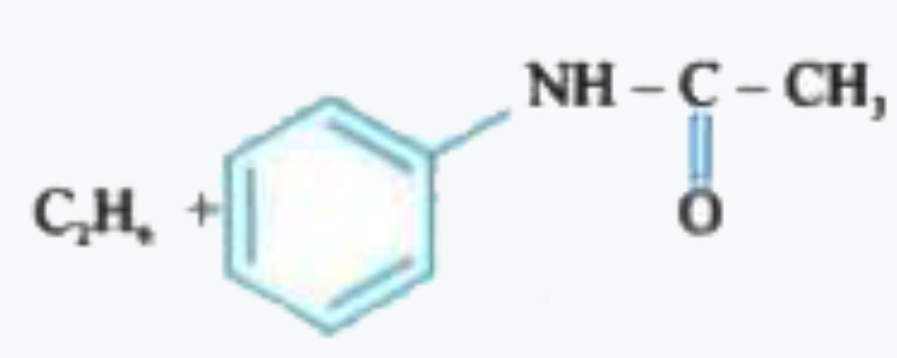Ehtanol reacts with acetic anhydride to give :
Higher alcohol
Ether
Ester
Alkene
The correct Answer is:C
To determine what ethanol reacts with acetic anhydride to produce, we can follow these steps:
Step 1: Identify the Reactants
Ethanol (C2H5OH) and acetic anhydride (CH3COOCOCH3) are the two reactants involved in the reaction.
Hint: Always start by identifying the chemical structures of the reactants involved in the reaction.
Step 2: Understand the Reaction Type
The reaction between ethanol and acetic anhydride is a nucleophilic acyl substitution reaction, where ethanol acts as a nucleophile and acetic anhydride acts as an electrophile.
Hint: Recognize that nucleophiles donate electron pairs to electrophiles, leading to the formation of new bonds.
Step 3: Nucleophilic Attack
The oxygen atom in ethanol (C2H5OH) has a lone pair of electrons, which allows it to attack the carbonyl carbon of acetic anhydride. This results in the formation of a tetrahedral intermediate.
Hint: Look for the lone pairs on the nucleophile that allow it to attack the electrophile.
Step 4: Formation of the Intermediate
When ethanol attacks acetic anhydride, a tetrahedral intermediate is formed. This intermediate has a negatively charged oxygen atom and a positively charged oxygen atom.
Hint: Keep track of the charges during the reaction as they can indicate the stability of intermediates.
Step 5: Collapse of the Intermediate
The tetrahedral intermediate collapses, leading to the expulsion of an acetate ion (CH3COO-) and the formation of ethyl acetate (C2H5OCOCH3).
Hint: The leaving group is usually a stable ion or molecule that can be expelled from the reaction.
Step 6: Final Products
The final products of the reaction are ethyl acetate (C2H5OCOCH3) and acetic acid (CH3COOH).
Hint: Always write down the final products clearly to confirm the outcome of the reaction.
Conclusion
Thus, when ethanol reacts with acetic anhydride, the products formed are ethyl acetate and acetic acid.
Final Answer: Ethanol reacts with acetic anhydride to give ethyl acetate (an ester) and acetic acid.
---
Ethanol (C2H5OH) and acetic anhydride (CH3COOCOCH3) are the two reactants involved in the reaction.
The reaction between ethanol and acetic anhydride is a nucleophilic acyl substitution reaction, where ethanol acts as a nucleophile and acetic anhydride acts as an electrophile.
The oxygen atom in ethanol (C2H5OH) has a lone pair of electrons, which allows it to attack the carbonyl carbon of acetic anhydride. This results in the formation of a tetrahedral intermediate.
When ethanol attacks acetic anhydride, a tetrahedral intermediate is formed. This intermediate has a negatively charged oxygen atom and a positively charged oxygen atom.
The tetrahedral intermediate collapses, leading to the expulsion of an acetate ion (CH3COO-) and the formation of ethyl acetate (C2H5OCOCH3).
The final products of the reaction are ethyl acetate (C2H5OCOCH3) and acetic acid (CH3COOH).
Thus, when ethanol reacts with acetic anhydride, the products formed are ethyl acetate and acetic acid.
Similar Questions
Knowledge Check
- Question 1 - Select One
Aniline reacts with acetic anhydride to give
A B
B C
C D
D
- Question 2 - Select One
The compound C4H10O4 reacts with acetic anhydride to give a derivative with the formula C12H18O8. How many (OH) groups are present in the original substance
A2B3C7D4 - Question 3 - Select One
Glucose reacts with acetic anhydride to form
AmonoacetateBtetra-acetateCpenta-acetateDnone of these.
Glucose reacts wih acetic anhydride to form:
View SolutionBenzaldehyde condenses with acetic anhydride to give cinnamic acid in presence of –
View SolutionAcetic anhydride is used:
View SolutionWhich of the following compound reacts with acetic anhydride to produce a compound which is a pain killar and antipyretic?
View SolutionAniline is reacted with acetic anhyldirde gives
View Solution

